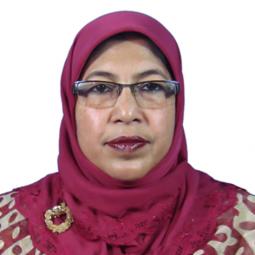OWSD Nigeria National Chapter Presents: "Waste management and its utilization" by Obioma Kenechukwu Agwa
May 28, 2020
In this fifth edition of the OWSD Nigeria National Chapter University of Port Harcourt Branch series of scientific communications, Obioma Kenechukwu Agwa educates us about waste management.
Wastes are materials or substances or by products eliminated or discarded as they are no longer useful or required after the completion of a process. These wastes litter the environment and cause menace leading to pollution. They can be transformed into useful products thereby reducing and preventing pollution.
These wastes are materials used for energy production or in various industrial processes as raw materials for a range of products. They can be called substrates or biomass. Biomass are materials used for industrial application. They stem from:
Agricultural residues - wastes from plant products
Domestic wastes - wastes from our homes during washing, mopping and cooking.
Animal wastes - wastes from animals.
Industrial wastes - effluents from the industries.
They can be categorized into:
Solid wastes - Agricultural and animal wastes
Liquid wastes - Domestic and Industrial wastes
Gaseous wastes - wastes from emission of cars, generators and lorries
Common wastes include:
1. Firewood
The combustion of firewood leads to ash. The ash contains potassium, calcium, phosphorus with traces of minor elements. They are used in farms as organic manure because it is water soluble, alkaline in nature and can act as a lime substitute. They can serve as insect repellent, polish, abrasive, stain/odour remover and teeth whitener. They can also be used in skin products.
2. Maize-corn waste
Maize-corn waste can serve as source of firewood when dried, and are good material for building thatched houses in villages. The also aid in digestion and contain a lot of nutrients, fiber, vitamin C, magnesium, phosphorus, amino acids such as thiamine and folic acid.
3. Dried bark of plantain/banana fingers.
They have high fiber content, potassium, phosphorus, calcium, vit A (teeth, bone, and tissue formation), B6 (aid the immune system and promote brain/heart health), C (healing of wounds), D (helps in the absorption of calcium in the body), serves as a remedy for diarrhea/dysentery, lowers cholesterol levels/kidney failure and prevents ulcer/heart burn. They can also serve as an antioxidant, and control high blood pressure. They are used to soften and quicken the cooking of food substances such legume and bread fruit (ukwa). They are also used in making sauces for African salads, nkwobi, Isi ewu and serve as a good substitute for calcium potash (Akanwu).
4. Old clothes
These are solids that can be reduced in order to:
a. Prevent pollution in landfill,
b. Reduce green house gases,
c. Conserve energy,
d. Create economic development by:
- Generating new products through restyling of the materials
- Repurposing them into other materials
- Conversion of these wears into value added products such as resins, gums, adhesives, abrasives, ropes, paper, tissue rolls, plastics and insulators.
e. Lead to sustainable development in the community and aid in achieving the sustainable development goals.
5. Fruits and vegetables
These are the highly essential commodities used among all agricultural products. They are normally consumed raw, minimally processed because of the loss of essential nutrients, as well as processed into various products due to their nutrients and health‐promoting compounds. With the growing population and changing diet habits, Significant losses and waste in the fresh and processing industries are becoming a serious nutritional, economical, and environmental problem. The waste is composed mainly of seed, skin, rind, and pomace, containing good sources of potentially valuable bioactive compounds, such as carotenoids, polyphenols, dietary fibers, vitamins, enzymes, and oils, among others. These phytochemicals can be utilized in different industries including the food industry, for the development of functional or enriched foods, the health industry for medicines and pharmaceuticals, and the textile industry, among others. The use of waste for the production of various crucial bioactive components is an important step toward sustainable development.
All of these waste products can be converted into value added products by:
- Reducing waste
- Reusing waste
- Recycling waste
- Replacing hazardous materials
- Recovering the non toxic function of the waste.
For example, waste products can be converted into:
- Biogas
- Organic acids
- Enzymes
- Biofuels
- Biolubricants
- Bioplastics
As scientists we should focus the public on waste management and its utilization to cut the menace of environmental pollution in the society, educate them on how to effectively use waste products so as to enhance their means of livelihood and prevent certain health hazards.
Such a model of waste management and its utilization could lead to white biotechnology involving industrial production and development with minimal environmental impact. Until now, industrial processes and production are more accessible to men than women. Gender equality must be critically considered here because women more resource-focused, because of their different pattern of production and consumption, and have more knowledge about local ecosystems, so utilizing their distinct knowledge and skill could assist in moving towards more resource efficient and cleaner production. This leads to better utilization in the provision and safeguarding of waste management systems. The positive impact of including women would be felt directly as these information would be passed to their communities and equally educate their children leading to sustainability. The resilience of women to identify and address the need of the world are the driving force for the new, more equitable and the kind of future we want.
References
Hui YH, Meunier-Goddik L, Josephsen J, Nip WK, Stanfield PS (2004). Handbook of Food and Beverage Fermentation Technology. CRC Press. pp.27. ISBN 978-0-8247-5122-7.
Muchangos, L. S. D and Vanghter, P. 2019. Gender mainstreaming in waste education programs: A conceptional framework. Urban Science 29(3): 1- 12
Obi, F.O., Ugwuishiwu, B.O andNwakaire, J.N 2016 Agricultural waste concept, generation, utilization and management. Nigerian Journal of Technology (NIJOTECH) 35(4) : 957 – 964.
UNIDO 2015. Guide on gender mainstreaming environmental management projects. UNO publishing and library section, Vienna.











































